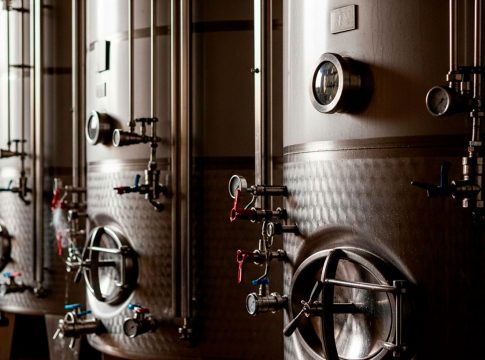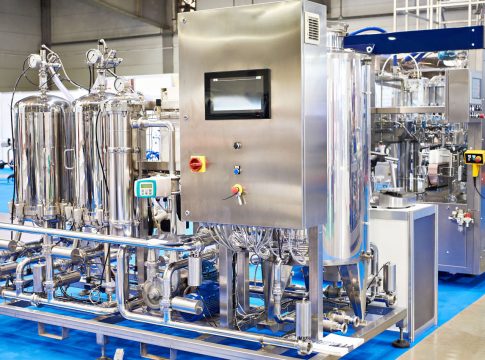
Dalle fermentazioni miste con ceppi selezionati di lieviti non Saccharomyces, ai ceppi di Saccharomyces cerevisiae migliorati grazie alle nuove tecniche messe a disposizione dalla genomica, le aziende del biotech enologico seguono da vicino il mondo della scienza, mettendo a disposizione prodotti sempre più sicuri e specifici per ogni tipo di applicazione e stile enologico, nel rispetto della tipicità e della biodiversità...
LEGGI L'ARTICOLO COMPLETO A FIRMA DI ALESSANDRA BIONDI BARTOLINI
PER APPROFONDIRE
(approfondimenti a cura dell'Autore)
Bibliografia
Anfang N, Brajkovich M, Goddard MR (2009). Co-fermentation with Pichia kluyveri increases varietal thiol concentrations in Sauvignon Blanc. Aus J Grape Wine Res 15:1–8 Azzolini M., Fedrizzi B., Tosi E., Finato F., Vagnoli P., Scrinzi C., Zapparoli G. (2012). Effects of Torulaspora delbrueckii and Saccharomyces cerevisiae mixed cultures on fermentation and aroma of Amarone wine. European Food Research and Technology. August 2012, Volume 235, Issue 2, pp 303-313 Bely M, Stoeckle P, Masneuf-Pomarède I, Dubourdieu D. (2008). Impact of mixed Torulaspora delbrueckii-Saccharomyces cerevisiae culture on high-sugar fermentation. Int J Food Microbiol. 2008 Mar 20; 122(3):312-20 Benito S., Palomero F., Morata A., Calderon F., Suarez-Lepe J. (2012). New applications for Schizosaccharomyces pombe in the alcoholic fermentation of red wines International Journal of Food Science & Technology, Volume 47, Issue 10, 2101–2108 Ciani M. & Ferraro L. (1996). Enhanced glycerol content in wines made with immobilized Candida stellata cells. Appl Environ Microb 62: 128–132 Ciani M. & Ferraro L. (1998). Combined use of immobilized Candida stellata cells and Saccharomyces cerevisiae to improve the quality of wines. J Appl Microbiol 85: 247–254 Ciani M., Beco L., Comitini F. (2006). Fermentation behavior and metabolic interactions of multistarter wine yeast fermentations. Int. J. Food Microbiol. 108:239–245 Ciani M., Comitini F., Mannazzu I., Domizio P. (2010). Controlled mixed culture fermentation: a new prospective on the use of non-Saccharomyces yeasts in wine making. FEMS Yeast Res. 10:123–133 Ciani M., Comitini F., Mannazzu I., Domizio P. (2010). Controlled mixed culture fermentation: a new perspective on the use of non-Saccharomyces yeasts in winemaking. FEMS Yeast Res 10:123–133 Ciani M., Ferraro L. (1998). Combined use of immobilized Candida stellata cells and Saccharomyces cerevisiae to improve the quality of wines. J. Appl. Microbiol. 85:247–254 Ciani M. (1995). Continuous deacidification of wine by immobilized Schizosaccharomyces pombe cells: evaluation of malic acid degradation rate and analytical profiles. J Appl Bacteriol 79: 631–634 Comitini F., De Ingeniis J., Pepe L., Mannazzu I. & Ciani M. (2004). Pichia anomala and Kluyveromyces wickerhamii killer toxins as new tools against Dekkera/Brettanomyces spoilage yeasts. FEMS Microbiol Lett 238: 235–240 Comitini F., Gobbi M., Domizio P., Romani C., Lencioni L., Mannazzu I., Ciani M. (2011). Selected non-Saccharomyces wine yeasts in controlled multistarter fermentations with S. cerevisiae. Food Microbiol 28:873–882 Comitini F., Ciani M. (2011). Kluyveromyceswickerhamii killer toxin: purification and activity towards Brettanomyces/Dekkera yeasts in grapemust. FEMS Microbiol Lett 316 (2011) 77–82 Contreras A., Hidalgo C., Henschke P.A., Chambers P.J., Curtin C., Varela C. (2014). Evaluation of non-Saccharomyces yeasts for the reduction of alcohol content in wine. Appl Environ Microbiol. Mar;80(5):1670-8 De Ingeniis J., Raffaelli N., Ciani M., Mannazzu I. (2009). Pichia anomala DBVPG 3003 Secretes a Ubiquitin-Like Protein That Has Antimicrobial Activity. APPLIED AND ENVIRONMENTAL MICROBIOLOGY, 75(4) , p. 1129–1134 Ferraro L., Fatichenti F. & Ciani M. (2000). Pilot scale vinification process by immobilised Candida stellata and Saccharomyces cerevisiae. Process Biochem 35: 1125–1129 Ganga M. A., Carriles P., Raynal C., Heras J. M., Ortiz-Julien A. and Dumont A. (2013). Lots of Latin makes for maximum aroma revelation in white wines [online]. Australian and New Zealand Grapegrower and Winemaker, No. 598, Nov: 73-77 Kapsopoulou K., Kapaklis A., Spyropoulos H. (2005). Growth and Fermentation Characteristics of a Strain of the Wine Yeast Kluyveromyces thermotolerans Isolated in Greece. World Journal of Microbiology and Biotechnology Volume 21, Issue 8-9 , pp 1599-1602 Ponticello G., Giaramida P., Gandolfo V., Fasciana T., Scacco A., Amore G., Oliva D. (2013). Miglioramento qualitativo dei vini rossi tramite l'impiego in cantina di ceppi di Candida Zemplilina isolati in Sicilia. www.infowine.com Rivista Internet di Viticoltura ed enologia. n.9/1 Rantsiou K., Dolci P., Giacosa S., Torchio F., Tofalo R., Torriani S., Suzzi G., Rolle L., Cocolin L. (2012). Candida zemplinina Can Reduce Acetic Acid Produced by Saccharomyces cerevisiae in Sweet Wine Fermentations Appl Environ Microbiol. 2012 March; 78(6): 1987–1994 Silva S., Ramón-Portugal F., Andrade P. , Abreu S., Texeira M., Strehaiano P. (2003). Malic Acid Consumption by Dry Immobilized Cells of Schizosaccharomyces pombe, Am. J. Enol. Vitic 2003 vol. 54 no. 1 50-55 Soden A., Francis I.L., Oakey H. & Henschke P.A. (2000). Effect of co-fermentation with Candida stellata and Saccharomyces cerevisiae on the aroma and composition of Chardonnay wine. Aust J Grape Wine R 6: 21–30 Zara G., Farris A., Budroni M., Mannazzu I., Pinna B., Murru M., Zara S. (2011). Fermentazioni scalari di Candida Zemplilina/Saccharomyces cerevisiae per l'aumento del contenuto in glicerolo e la riduzione del grado alcolico dei vini. Www.infowine.com Rivista Internet di Viticoltura ed Enologia, 2012, n.4/3









